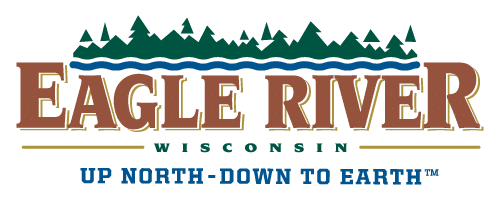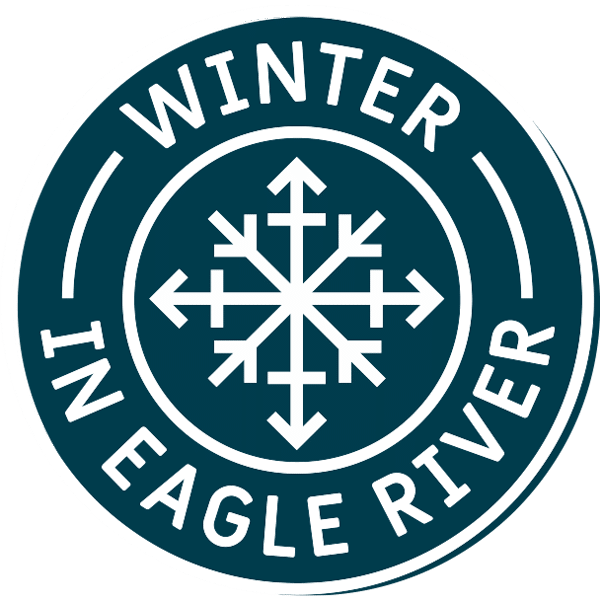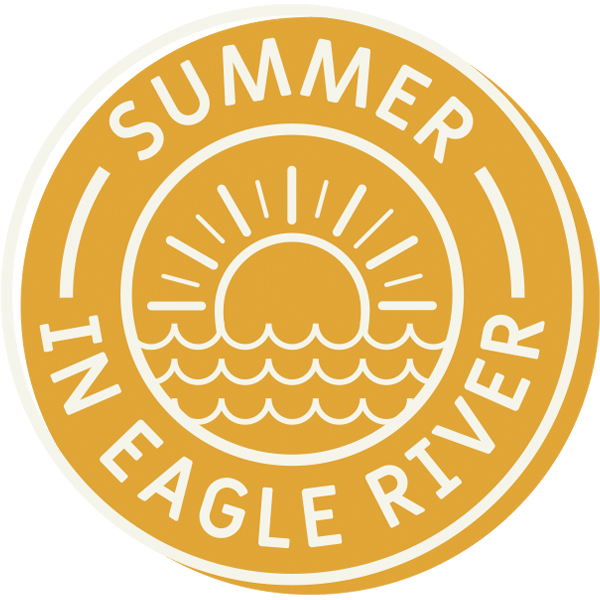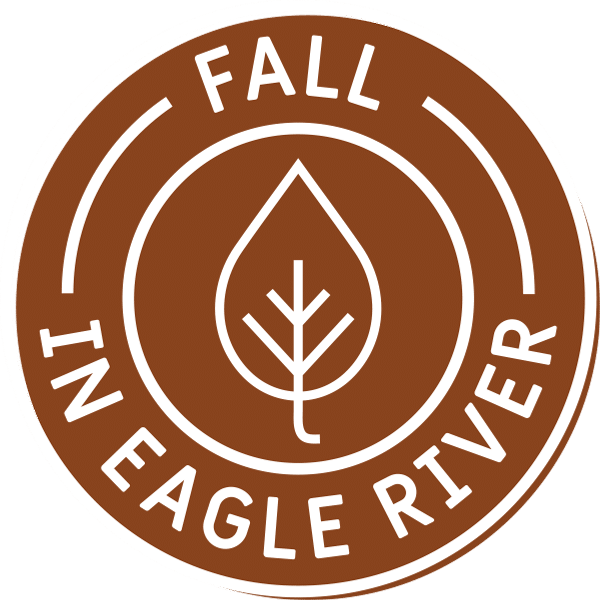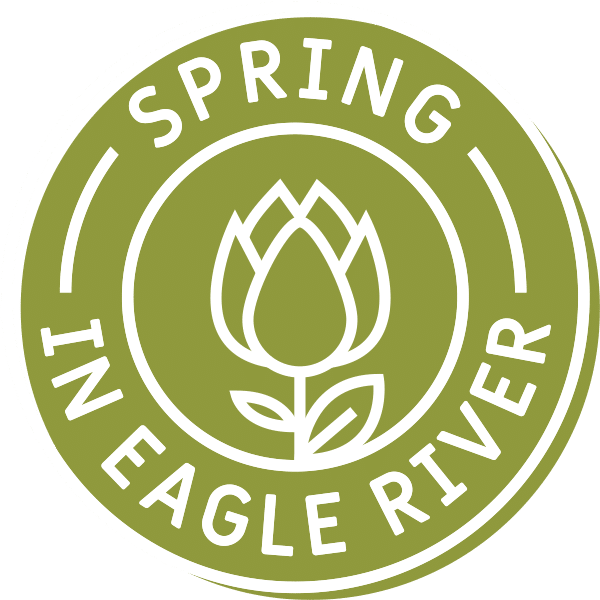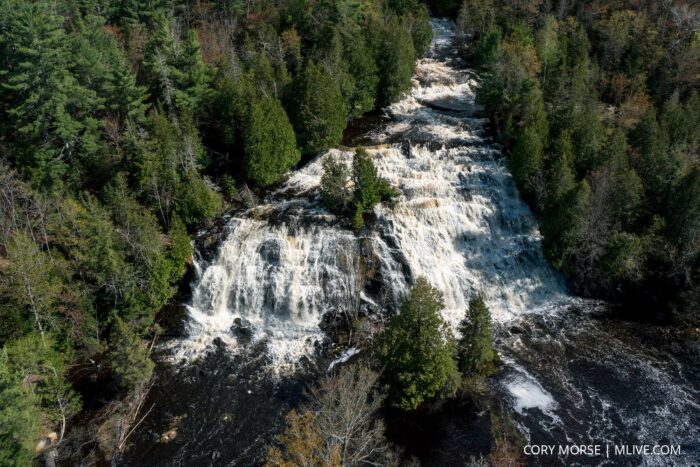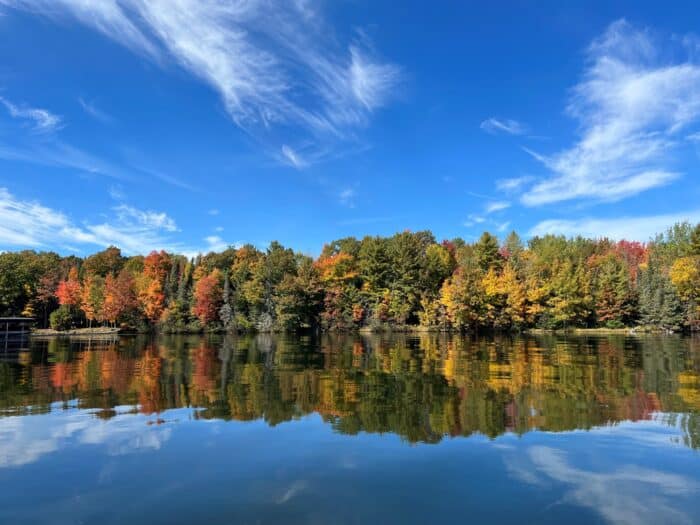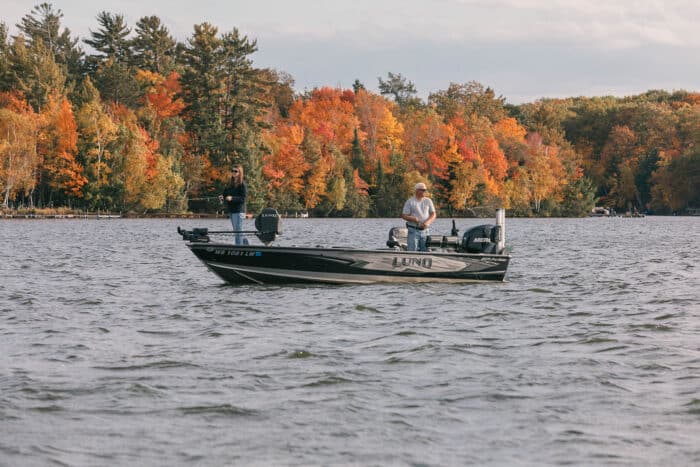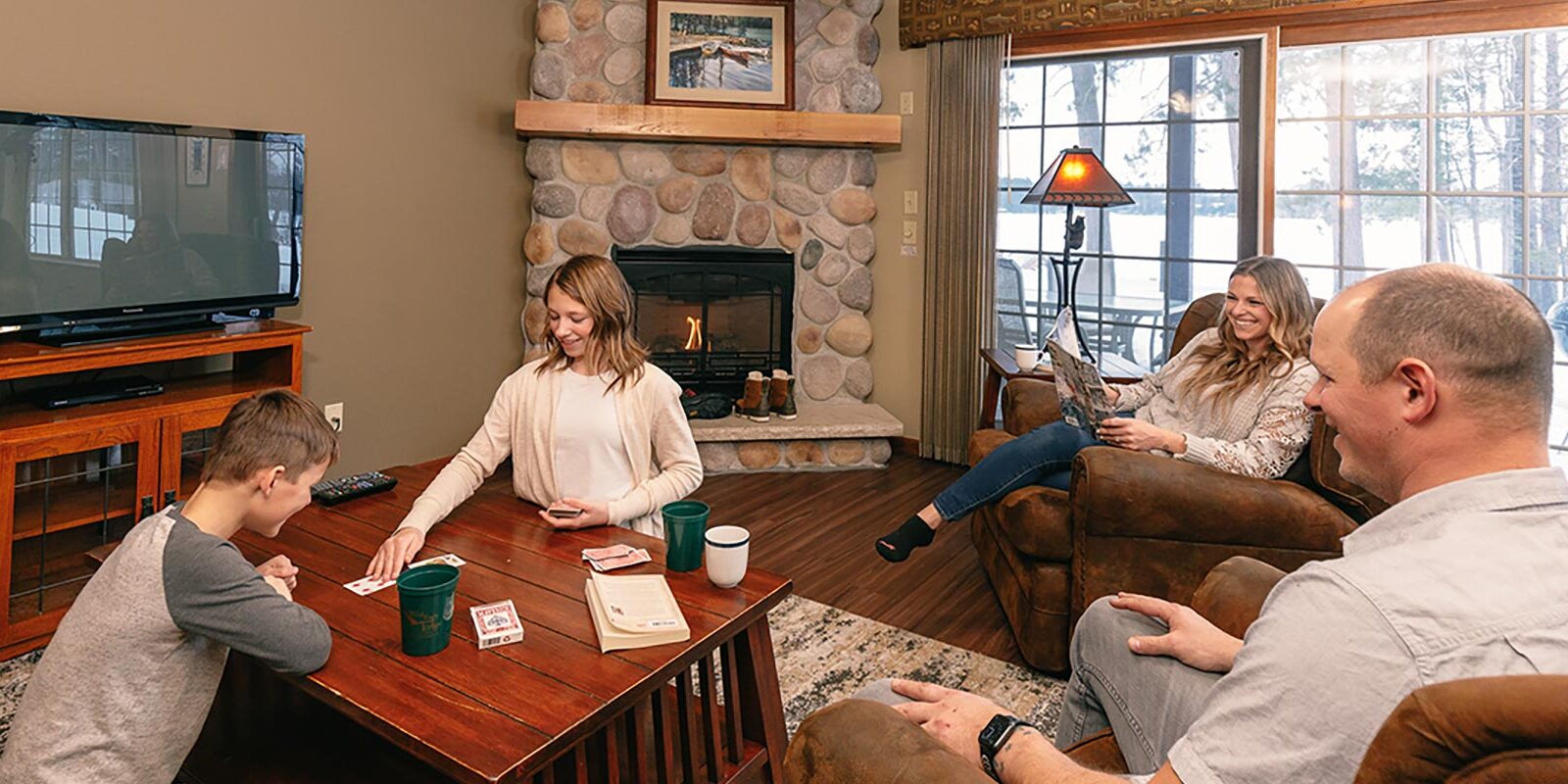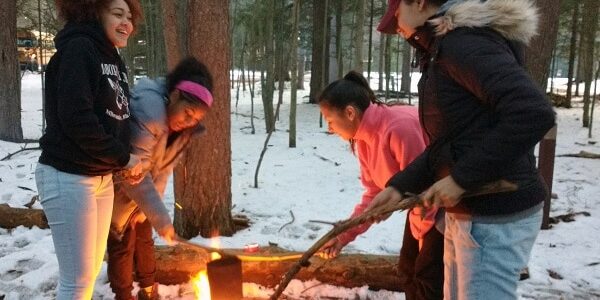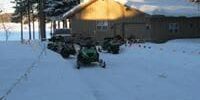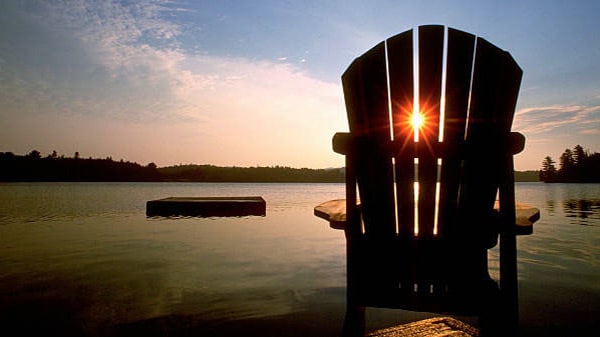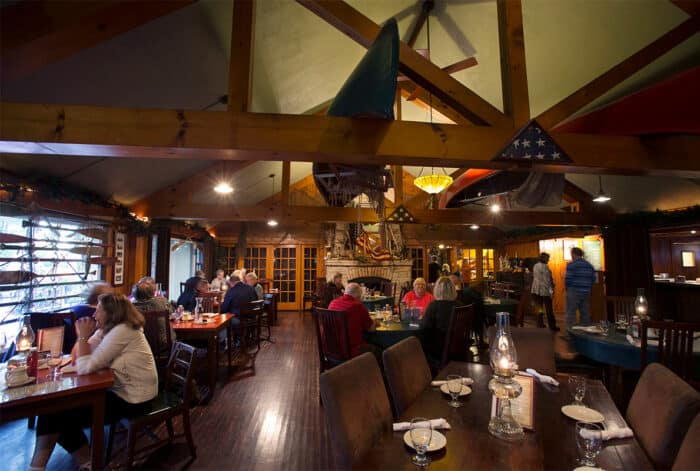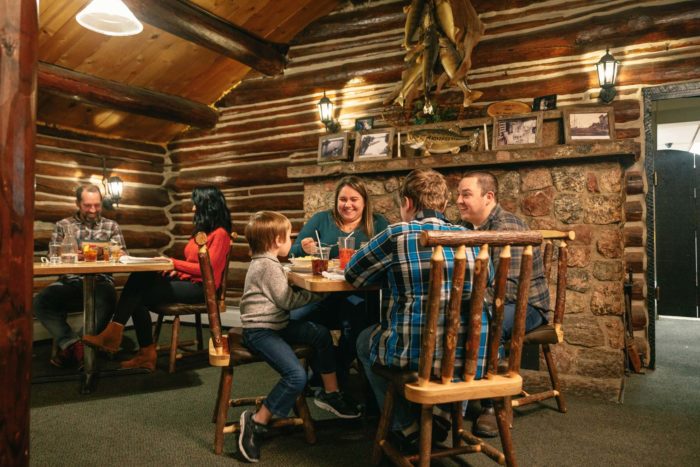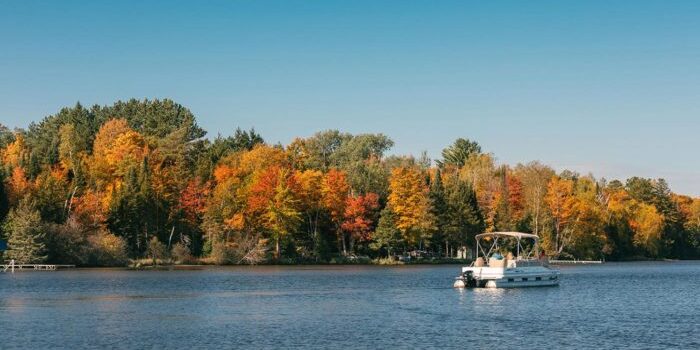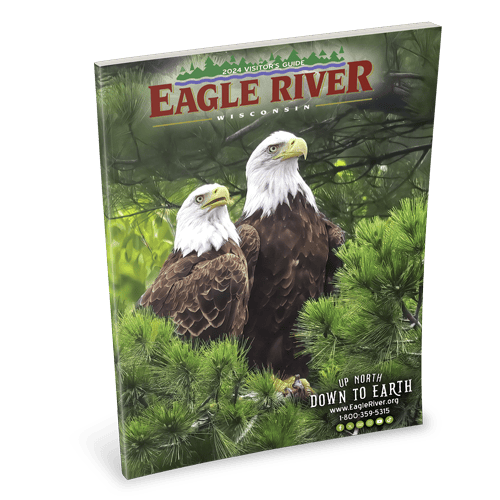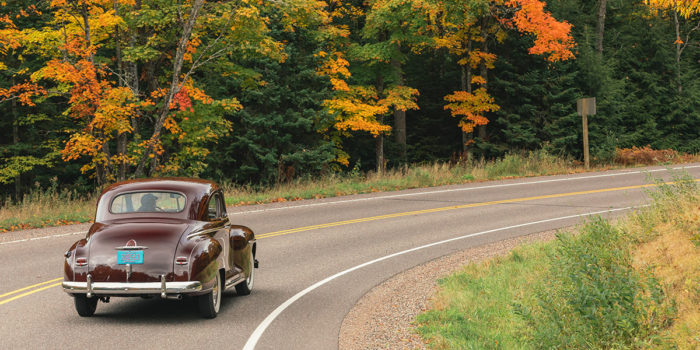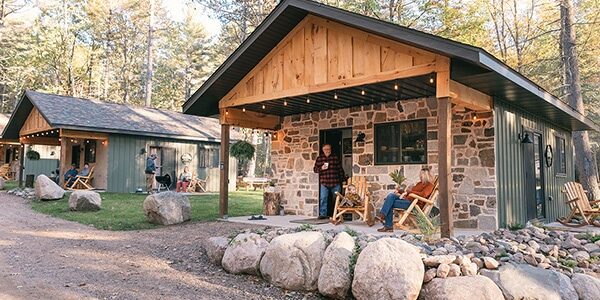The Making of a Community
Eagle River was the site of the first permanent Indian settlement in the Wisconsin Northwood's, located on the shores of Watersmeet Lake where the Wisconsin River and Chain 0' Lakes meet. These early Indians were called Old Copper Indians and were succeeded by the Woodland Indians from 2,600 B.C. to 800 A.D. These Indians were probably the ancestors of the Chippewa, Potawatomi and Menominee.
The city's name was derived from the abundance of eagles nesting along the river. It is believed that a Bethuel Draper and "Dutch Pete" Cramer camped in the area in 1853 and were responsible for naming Eagle River. A settlement grew as numerous other families began living in the area in 1857. John O'Connor and his son, George, are credited with being foremost among the founding fathers of Eagle River. Their dedication to the growth of the community and their active participation in its civic and political affairs, led to the creation of the town of Eagle River by an act of the State Legislature in 1885, and ultimately to the creation of the county of Vilas on April 12, 1893.
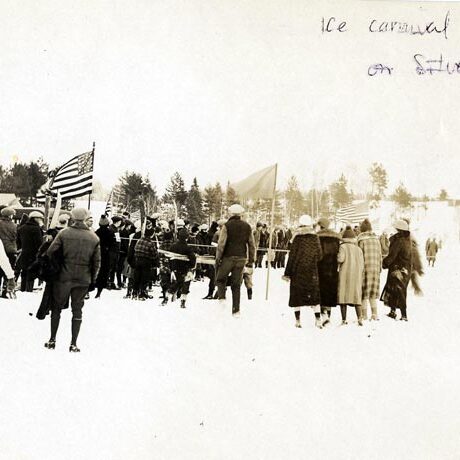
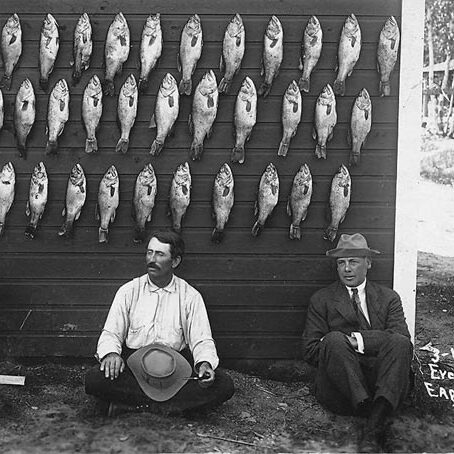
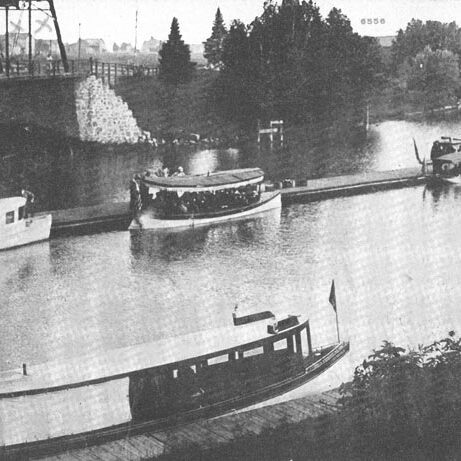
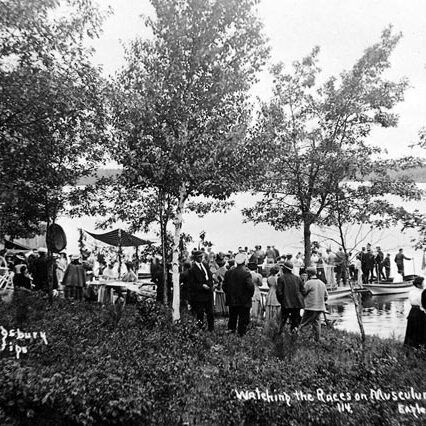
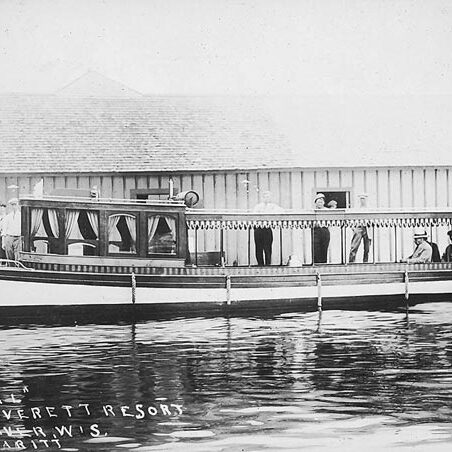
EARLY SETTLERS
The population was primarily made up of lumberjacks who worked in the logging camps scattered throughout the area. The only other residents of the town at that time were Finn Lawler, Charles L. Perry and Frank and Marilla Tambling. Other inhabitants of the area included a few home- steaders, traveling trappers or fur buyers and the Indians, whose encampments were mainly along the Wisconsin River.
Logging and fur trading were the dominant trades. It wasn't until 1925 with the development of the automobile that the resort industry began to grow.
Early records show as many as 1,500 to 1,600 people made up the population of Eagle River. The current population of Eagle River is only 1,431. The city itself is less than a couple of square miles, which explains the small growth in numbers.
In 1855, Joshua Fox and his partner, Helms, settled on the east shore of Eagle Lake and established a trading post there. This post was named "Kee Mi Con" by an Indian guide, who when paddling Fox up the river to the site asked, "Kee Mi Con", or "have you found it?"
C" "
Fox operated the first post office in the area from the Kee Mi Con Trading Post and also established a "wildcat bank" called the Kee Mi Con Bank. Here, at this post, the first presidential votes were cast when Abraham Lincoln was elected in the fall of 1860.
The first logging camp in Vilas County was also built by these early fur traders, Fox and Helms. Located on Catfish Lake, this camp floated the first pine logs down the river to market in 1856.
The Indians lived throughout the area, trading with the settlers some of whom took Indian wives. One of these was Dan Gagen. In 1865 Dan started his trading post and post office at Gagen Hill on the east side of Yellow Birch Lake. Prior to this date, in 1853 H.B. Polar operated a trading post on Yellow Birch Lake and was later joined by C.L. (Dad) Perry.
In 1876, Art Croker came up from Stevens Point. He and eight other men poled up the Wisconsin River in three bateaus (canoes) to O.W. Saunder's camp at the foot of Otter Rapids. Al Croker's brother, Clint Croker, came up the next year to work at Dan and Finley McDonald's camp, located on what is now the Croker Farm, land that the Croker brother's later homesteaded in the 1890s.
In 1878, lumbermen built a dam on the Wisconsin River at the head of Otter Rapids. Also, in 1878, John Phelps built a logging camp on the south shore of the Eagle River, within the present city limits.
In 1883, George P. Dickinson and Lyman J. Cook came to Eagle River with a stock of merchandise, which they had to transport by livery from Three Lakes, since the railroad went no further. They set up a mercantile store in a tent on the north bank of the Eagle River. Later, they built a store on the south side of the river where the city's Riverview Park is now located. This store was burned during a forest fire, and then moved to a third location. Dickinson built a log home for his family on the north shore of the Eagle River, close to the bank. (This building still stands and is a supper club known as the White Spruce Inn.) Lyman Cook's son, Paul Cook, the first white male child was born in Eagle River on October 10, 1884.
In March 1883, John O'Connor purchased from John Phelps, an Eagle River logger and speculator, a large tract of land encompassing the present site of the City of Eagle River. John also acquired large tracts of land by government patent, one sub-division being known as the Original Plat of Eagle River. He built shanties on the north shore of the Eagle River and prepared for a logging operation. One of his shanties was used as the first school house, occupied by the children during the day, and by the loggers at night. The first town elections were held in this same shanty.
On April 12 of that same year, accompanied by his 18 year-old son, John came to Eagle River and established a home for his family. He and his wife, Ann Golden O'Connor, made the first, second and third plats of the city, selling lots to those who became future inhabitants.
In 1887, L. J. Cook, George Dickinson, and Frank Tambling had acquired large tracts of land by government patent. They hired a surveyor and laid out the village north of what is now Division Street.
On January 22, 1893 a feud arose between Chippewa (Ojibwe) and Potawatomi Indian men that resulted in what was perhaps the most lurid Indian murder that ever occurred in the early history of Eagle River known as the Short Portage Massacre.
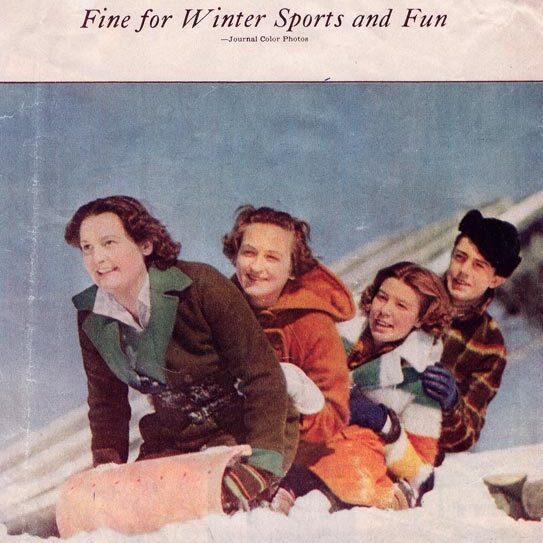
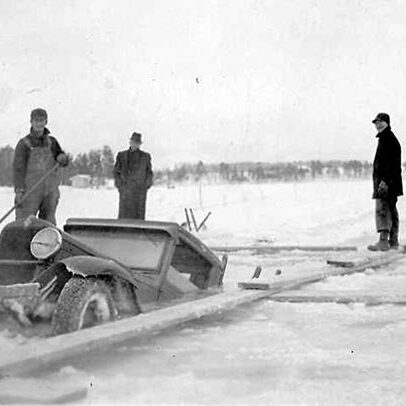
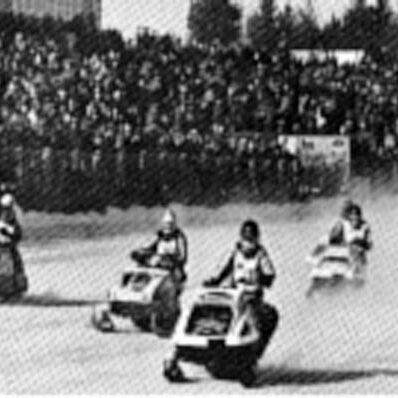
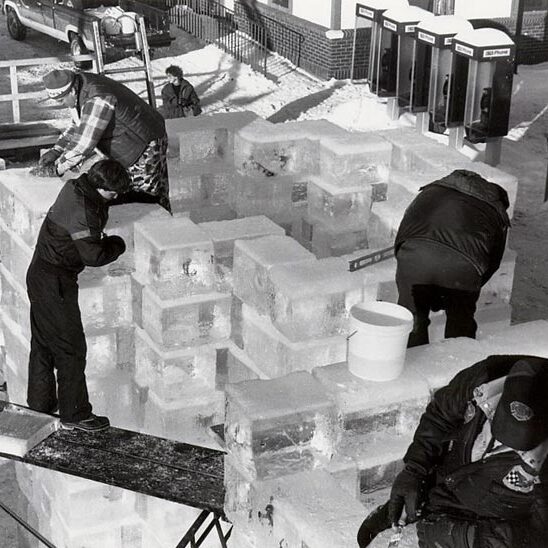
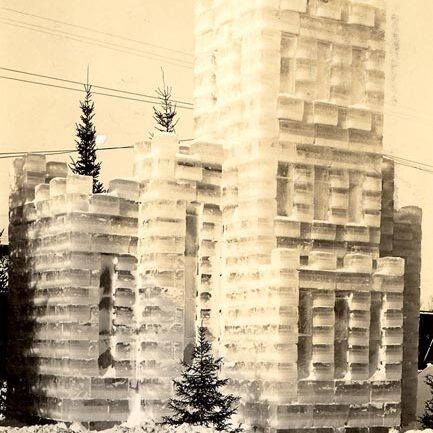
WITHIN CITY OF EAGLE RIVER
The first hospital was located at the northeast corner of Wall and Main Street (now the Arrow Gift Shop). The first school house built in Eagle River (that was used only as a school) was built in 1885.
St. Peter the Fisherman Catholic Church began shortly after Eagle River was incorporated. Priests from Antigo made their way to this small logging community to care for the spiritual needs of its settlers and held masses in homes or the town hall. The church was built in 1890, at a cost of $1,325.
Edwards and Clinton logging camp was situated on the site of what is now the Trees for Tomorrow Natural Resources and Environmental Education Center. Trees for Tomorrow is the Midwest's oldest natural resources education facility, established in 1944. Many of the buildings on these grounds were built by the Civilian Conservation Corps in the 1930s. Trees for Tomorrow is listed on the National Register of Historic Places.
The railroad depot was built in the 1920s. Passenger service continued via the Chicago Northwestern railroad from 1920 through 1965 and freight continued to 1980, when the tracks were pulled. The depot was then remodeled into its present day status.
Eagle River Sports Arena was once part of the Jack 0' Lantern Resort Complex and was patterned after the Lake Placid area. It was built in 1932 and has been used for hockey, figure skating and other events. Originally there were two toboggan slides and a ski jump. It is now listed on the Historic Register and is noted for its unusual roof construction. The Wisconsin Hockey Hall of Fame is housed here. Jack 0' Lantern Lodge was a glamorous gambling lodge back in the 30s and 40s, owned by Chuck Taylor. He sold it to the late Allen Dorfman in 1950 and it was then used to host family friends of high-ranking leaders of the Teamsters Union.
The Chanticleer Inn dates back to 1922, with the Alward family purchasing it in 1951. In January 1964 the Alwards pioneered the first World Championship Snowmobile Derby on Dollar Lake, which two years later moved to the permanent Derby site on Highway 45 North.
Lake Forest Golf Course was originally called Eagle Waters Golf Club. In 1917, a small group of wealthy regulars started a private club open to the elite group of cottage owners in the Everett Colony and their guests. Many famous people golfed there, with President Dwight D. Eisenhower being a frequent visitor in the 1950s. On some days as many as one hundred caddies served its members. Bets of $1,000.00 per hole were not unusual. Jim Mason purchased the club in 1963 and built the first four units of Lake Forest Resort and Club, Wisconsin's first successful time share resort, on this 210 acre parcel.
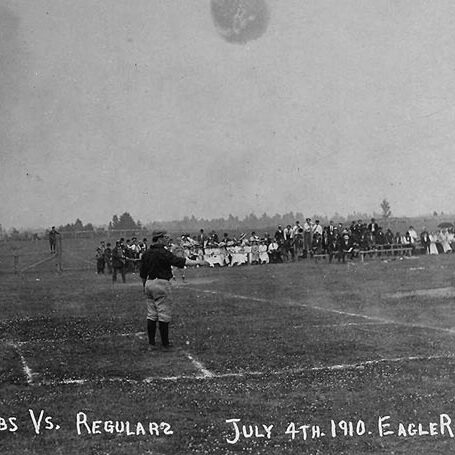
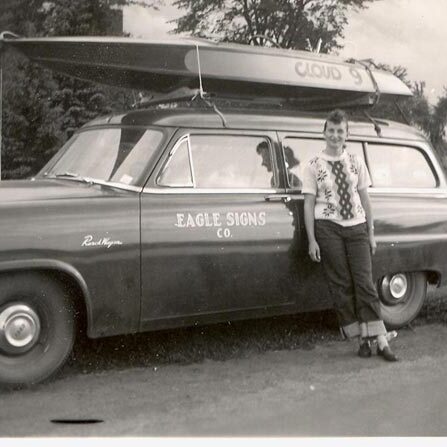
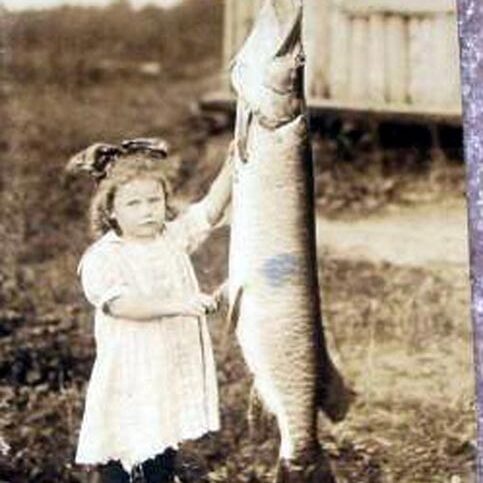
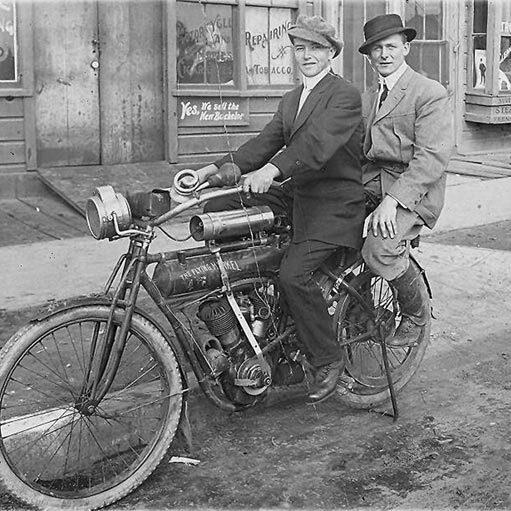
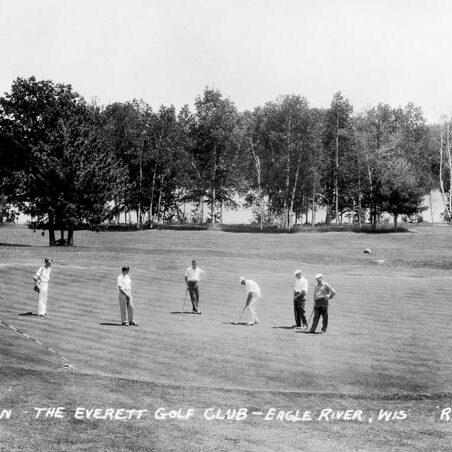
DAMS OF THE EAGLE CHAIN OF LAKES
The Eagle River Light and Water Commission built the original Otter Rapids dam and power plant in 1906. An electric transmission line connecting the dam with Three Lakes was erected in 1923, and other lines were built to Woodruff and Minocqua in 1925. The line to Woodruff gave the community electricity for the first time. A municipally owned gas-driven engine had previously supplied Minocqua's service.
Burnt Rollways Dam was put into operation in 1911. The original boat hoist was an inclined marine railway on the main dam. From 1911 to 1949, it was driven by direct mechanical power from a water wheel in the dam. In 1949 it was modernized with electric drive motors and the incline was reduced by passing the tracks through a hydraulic drawbridge in the roadway. In 1952, because of the increase in boat sizes and boating traffic, a new and larger hoist was constructed. A 165' trestle way with an electrically operated gantry hoist was designed and built to lift and transport the boats from one side of the dam to the other. Boats up to 8' wide and 30' long can travel between the lower Eagle River Chain to the upper Three Lakes Chain, which combined, makes up the largest inland freshwater chain of lakes.
